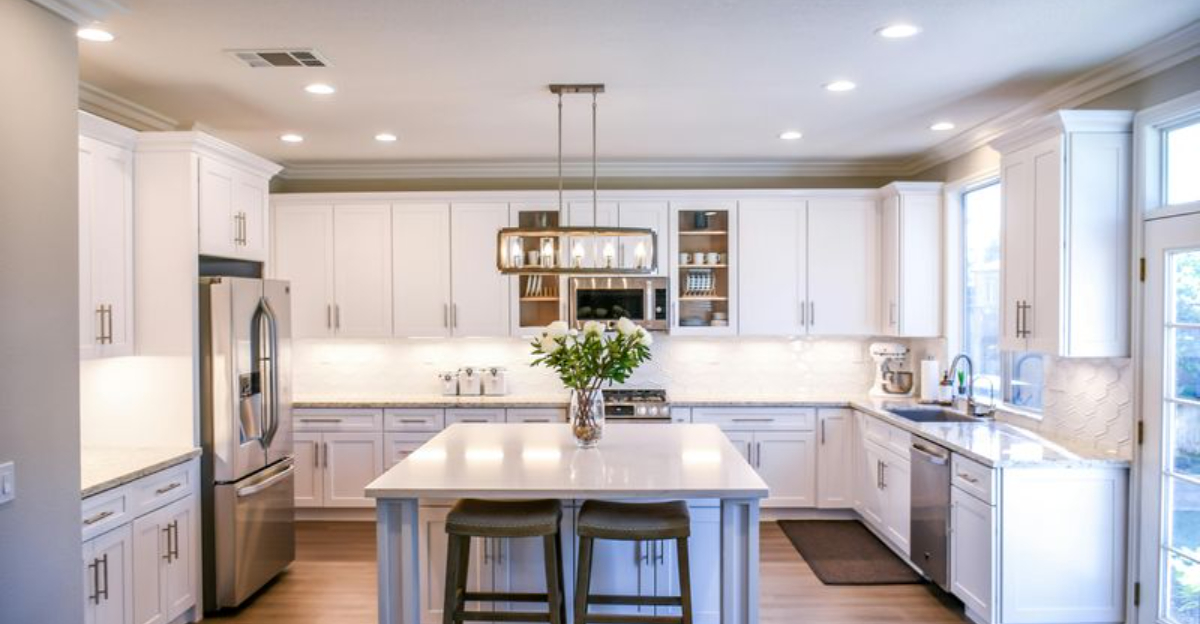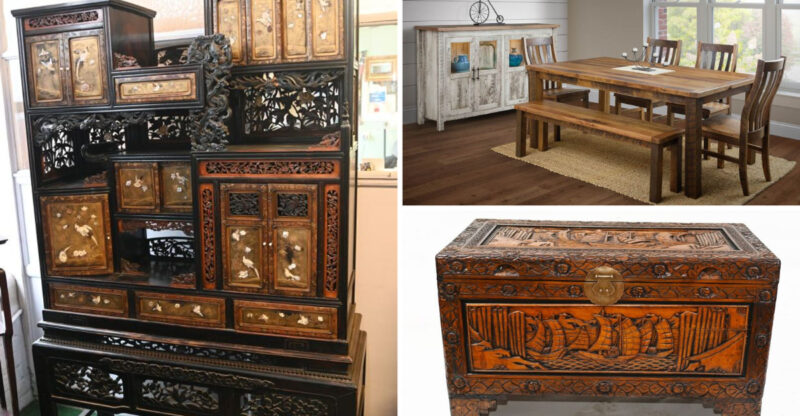8 Storage Strategies That Could Transform Your Kitchen

Kitchens can easily turn into chaotic spaces where finding what you need feels like searching for buried treasure. Clever storage solutions can transform your kitchen from frustrating to functional, making cooking and meal prep more enjoyable.
Whether your kitchen is compact or generously sized, these fourteen practical storage strategies can help you make the most of every inch while keeping your space organized and efficient. Keep in mind that results may vary depending on your kitchen layout and existing storage options.
1. Pull-out pantry shelves
Reaching for items in the back of deep cabinets often means knocking everything else over. Pull-out pantry shelves solve this problem instantly by bringing all your goods front and center with one smooth motion.
Installing these sliding wonders means no more forgotten food expiring in dark corners. Each shelf extends fully, giving you complete visibility of every item you own. The tracks can support surprising weight too up to 100 pounds on quality models!
For narrow spaces between appliances, consider slim pull-outs that transform awkward gaps into perfect spice or canned good storage. Even corner cabinets become functional with specialized pull-out systems designed for those tricky angles.
2. Under-cabinet spice racks
Spice jars consume precious counter space when left out but become frustratingly difficult to find when tucked away in cabinets. Under-cabinet spice racks solve this dilemma by utilizing the often-overlooked space beneath your upper cabinets.
Magnetic strips allow metal-lidded spice jars to hang upside down, displaying labels for easy identification. Pull-down models conceal your collection until needed, then lower to bring all options into view. Some versions even include built-in lighting to illuminate your culinary arsenal.
For renters, tension rod systems offer damage-free installation while providing the same space-saving benefits. Whichever style you choose, having spices within arm’s reach of your cooking area will streamline meal preparation and inspire more adventurous seasoning experiments.
3. Deep drawers for pots and pans
Digging through stacked pots and pans in traditional cabinets creates unnecessary noise and frustration. Deep drawers revolutionize cookware storage by allowing you to see and access every item without removing others first.
Heavy-duty glides support the substantial weight of cast iron and stainless steel collections. Unlike cabinets, drawers utilize the full depth of the space, eliminating that awkward reaching to the back. Adding simple peg dividers creates customized sections that prevent shifting and rattling when opening and closing.
If retrofitting your kitchen, consider converting existing cabinets to pull-out drawers. The transformation dramatically improves functionality without requiring a complete renovation. Your back will thank you for eliminating the need to kneel and reach into low cabinets during meal preparation.
4. Drawer organizers for utensils
Jumbled utensil drawers waste precious minutes as you hunt for that perfect spatula buried beneath whisks and measuring spoons. Custom drawer organizers transform this daily frustration into satisfying efficiency with designated spots for every kitchen tool.
Bamboo or plastic dividers with various compartment sizes accommodate everything from tiny measuring spoons to bulky serving utensils. Expandable designs adjust to fit your specific drawer dimensions without wasting space. Some systems even include stacking tiers to double your storage capacity within the same drawer.
When organizing, group similar items together measuring tools in one section, spatulas in another to create an intuitive system. This thoughtful arrangement means you’ll grab exactly what you need without digging, and everyone in the household can easily return items to their proper places.
5. Hidden trash and recycling bins
Visible trash cans create eyesores in otherwise beautiful kitchens while taking up valuable floor space. Hidden waste systems tuck these necessities behind cabinet doors, maintaining your kitchen’s aesthetic while improving functionality.
Pull-out systems mount on smooth glides, allowing full extension for easy access. Dual-bin models separate trash from recycling, streamlining your environmental efforts. The enclosed design also contains odors more effectively than open containers.
If you frequently entertain, consider adding a small compost container to your hidden system. Modern versions include activated charcoal filters to eliminate smells, even in warm weather. The beauty of hidden waste management lies not just in its invisibility but in how it transforms a daily chore into a seamless experience that enhances your kitchen’s efficiency without compromising style.
6. Magnetic knife strips on the wall
Knife blocks consume precious counter real estate while making it difficult to identify specific blades. Magnetic strips mounted on walls or backsplashes display your entire collection at eye level while keeping dangerous edges safely away from curious fingers.
Strong magnets hold even heavy cleavers securely while allowing instant selection and removal. Unlike blocks with predetermined slots, magnetic strips accommodate any knife size or shape. The open-air storage also allows blades to dry completely, preventing potential rust or mold issues.
When installing, position your strip near your primary cutting area but away from the sink to prevent water splashes. Choose wood-encased magnets for a warmer aesthetic that won’t damage your knife edges, or sleek stainless steel for a professional kitchen vibe. This simple solution transforms essential tools into an artistic display while improving cooking workflow.
7. Stackable clear containers for pantry items
Mismatched food packages create visual chaos and waste vertical space in pantries. Uniform stackable containers transform this jumble into an organized system that maximizes space while keeping contents visible and fresh.
Clear acrylic or glass containers allow instant identification of contents and remaining quantities. Square or rectangular shapes utilize space more efficiently than round containers, eliminating wasted gaps. Airtight seals extend the freshness of dry goods like flour, sugar, and cereals far beyond their original packaging.
When transitioning to this system, start with your most frequently used items. Label each container with contents and expiration dates some containers feature writable surfaces for this purpose. The investment pays dividends beyond organization; seeing your ingredients beautifully displayed often inspires more home cooking and reduces duplicate purchases of items you already own.
8. Open shelving for frequently used items
Traditional upper cabinets can make kitchens feel closed in while hiding your most beautiful dishes. Open shelving brings light, spaciousness, and accessibility to your cooking space while showcasing your favorite pieces.
Floating wooden shelves add warmth against tile backsplashes, while metal brackets create industrial charm. The open design encourages thoughtful curation of your collection displaying only what you love and use regularly. Daily-use items become easier to grab and replace without opening and closing cabinet doors.
If transitioning from closed cabinets, start with just one wall of open shelving. Arrange items by both function and aesthetic appeal stacking plates by size, grouping glasses by type, and adding small plants or cookbooks for visual interest. This strategic exposure transforms utilitarian storage into a personalized display that reflects your style while keeping essentials within easy reach.






